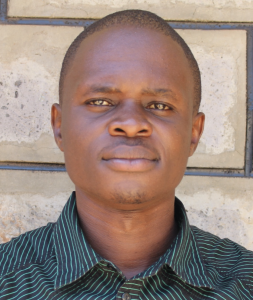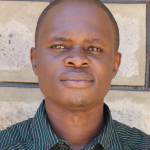In 1956, the Friends Church founded Nadanya Primary School with only three classes. With support from both the community and the government, the school has consistently grown, serving 390 students and 11 teachers and staff. But another thing has also grown in step with the school's population: their severe water crisis.
There is no source of water on school grounds at Nadanya Primary. Students are forced to come to school each morning carrying water from "home," though where exactly students fetch water varies. Some students opt for dangerous surface water sources such as streams and runoff ditches near the road to school to lessen their burden of carrying water along with their books and striving to get to class on time. Pupils are often late to or miss their morning lessons as a result of this daily routine.
In the afternoon, when the water runs out, students are sent out again to fetch more water for the school. Many pupils return home or to the stream for water, while others head to a protected spring three kilometers away in the village - that is almost a four-mile round-trip. Wherever students go for water, they scramble with one another, fearing which one of them will have to face a teacher for being late to class.
"Normal class hours are being interrupted as students are sent to go fetch water during lessons. This has greatly dragged completion of the school syllabus in the long-run, affecting the school's general performance in the Kenya Certificate of Primary Education. As a teacher of mathematics, my students have for a long time registered minimal performance," explained teacher Mr. Francis Ngeresa
After fetching water in the afternoon, students return to class tired and unfocused - if they return at all. Some choose to spend the afternoon at home, too daunted by the chore of returning with water one more time that day. In either case, students' academic performance is being dragged down by their responsibility to provide water for their school.
"On various occasions, I have missed coming to school for fear of being requested to go fetch water during school hours, and this has harmed my academics," said pupil Vallary.
Pupils miss more class time when they get sick from the school water. Even though the spring water and some students' home sources may be safe to drink, students' containers are filthy both inside and out, contaminating any water they carry.
Because water is combined for use at school, even one dirty source means everyone is at risk of water-related illnesses. And there is always more than one dirty source among students' jerrycans lined up on the school compound. These illnesses are expensive to treat, draining students' families of their financial resources as they seek medical treatment for their children.
What We Can Do:
Rain Tank
A 75,000-liter rainwater catchment tank will help alleviate the water crisis at this school. The school will help collect the needed construction materials such as sand, bricks, rocks, and water for mixing cement. We will complement their materials by providing an expert team of artisans, tools, hardware, and the guttering system. Once finished, this tank will begin catching rainfall used by the school’s students and staff for drinking, handwashing, cooking, cleaning, and much more.
The school and we strongly believe that all of these components will work together to improve standards at this school, which will help lead to better student academic performance and unlock the potential for these students to live better, healthier lives.
Handwashing Stations
The student health club will oversee the two new handwashing stations we will provide and ensure they are kept clean and in working condition. The club leaders will fill the handwashing stations with water daily and make sure they are always supplied with a cleaning agent such as soap or ash.
VIP Latrines
Two triple-door latrine blocks will be constructed with local materials that the school will help gather. Three doors will serve the girls, and three doors will serve the boys. These new latrines will have cement floors designed to be easy to use and clean. And with a rain tank right on school property, there should be enough water to keep them clean.
Training on Health, Hygiene, COVID-19, and More
We will hold a one-day intensive training session with students, teachers, and parents. This training will cover a wide range of topics, including COVID-19 symptoms, transmission routes, prevention; personal and environmental hygiene; and the operation and maintenance of the rain tank, latrines, and handwashing stations. There will be a special emphasis on handwashing.
Our team of facilitators will use various methods to train, including participatory hygiene and sanitation transformation and asset-based community development. We will initiate a student health club, which will prepare students to lead other pupils into healthy habits at school and home. We will also lead lectures, group discussions and provide illustrative handouts to teach health topics and promote good hygiene practices within the school, including handwashing and water treatment. We will then conduct a series of follow-up training before transitioning to our regularly scheduled support visits throughout the year.

 Rainwater Catchment
Rainwater Catchment
 Rehabilitation Project
Rehabilitation Project








































